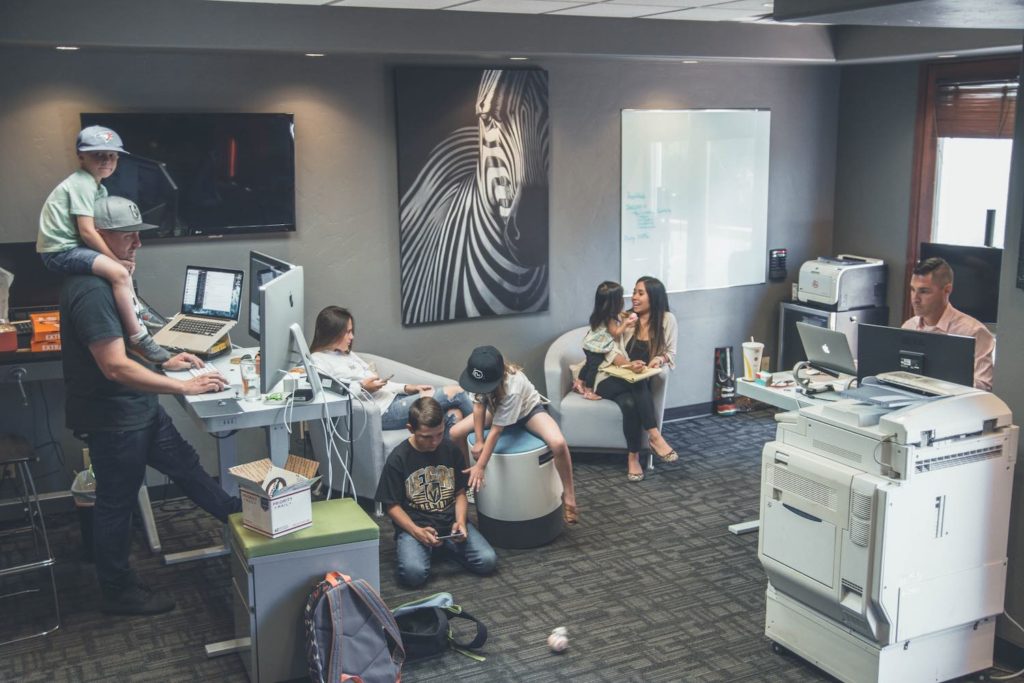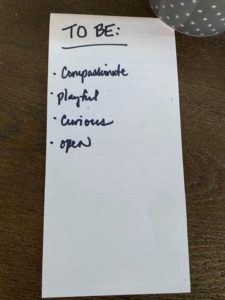By now, you may be fortunate to have settled into your new (or not-so-new) WFH space. So, how’s it going?


Seriously, how’s it really going?
Whether you already have the ideal home office space or MacGuyver’ed your dining room table into a Starfleet command center, your well-being and productivity go hand-in-hand.
There is something nourishing about a workspace you can enjoy working from. This does not mean that you need to create a perfectly organized and zen workspace. Enjoyment comes from feeling like you get what you need out of your workspace. To figure out what you need, begin by asking yourself how you feel in your workspace. Productive versus distracted? Organized versus chaotic? Focused versus scattered? Supported versus alone?
For some of us, we can function well in the company of other co-workers (aka our partners, children, extended family members, or pets); for others, our loved ones can be a distraction (and competition for WiFi bandwidth). Some people find quiet solitude to be a gift of uninterrupted time; others, find disconnection lonely and muddling. Left unchecked, work from home frustrations can wear us down, causing stress, anxiety, depression, and insomnia.
Cultivating mindfulness in a home office is about coping with the things we cannot control and being willing to experiment with the things we can control to decrease stress and anxiety during an unsettling experience. Here are some ideas to help you explore how to promote well-being while working from home.
Start out small, and select one idea from each of the lists below. Treat it like an experiment, without attachment to an outcome, and see how it goes. You might learn something along the way or be inspired to try this experiment again, selecting a couple new ideas.

Coping With Things We Cannot Control
- Practice mindfulness. Experiencing a pandemic can conjure a host of difficult feelings all at once. By calling upon our mindfulness practice, we can become aware of our thoughts and better understand what we feel. Perhaps we are frustrated with not being able to work the way we used to, anxious about the uncertain future, or overwhelmed with juggling homeschooling while meeting work deadlines. Mindfulness helps us cope with these feelings, without doing anything about it, because, most likely, we cannot change our situation. Mindful.org defines mindfulness as “the basic human ability to be fully present, aware of where we are and what we’re doing, and not overly reactive or overwhelmed by what’s going on around us.” (Check out some of the website’s free audio resources.)

- Practice gratitude. Studies indicate that a sense of gratitude can promote feelings of joy, even when life is less than satisfactory. Consider focusing on these things when practicing gratitude: the benefits of not having to spend time commuting in rush hour, having a job where you can WFH, having your family at home, your health, toilet paper, WiFi, delivery services, a cozy bed, a warm shower, your pets… what else? You may consider keeping a gratitude journal. Note that a sense of gratitude is not simply a thought; it is heartfelt.
- Practice altruism. Volunteering can contribute to your well-being. While you may not have the time to make face masks for donation, consider shopping for elderly neighbors or someone exhausted from working the frontlines. You don’t need to come in contact; just leave the groceries at their doorstep.
- Practice self-compassion. When life is difficult, we are sometimes harder on ourselves. Perhaps we respond to emails late into the evening because we want to appear responsive or accessible. Or perhaps we feel like we’re failing at managing the house, work and the children who may or may not have online classes. Research suggests that training in self-compassion can result in improved well-being.
- Be the change you wish to see in your world. While at the moment, we may not be able to be the change we wish to see in the outside world, we can still be the change within the confines of our home shelter. Amy Koop, a Bay Area professional, recently posted this idea on social media: instead of making a “to-do” list, she created a “to-be” list as a means to cope with her feelings of anxiety.

Changing Things We Can Control
- Set boundaries. Practicing self-compassion may lead to setting boundaries between being accessible and too available. One way to set boundaries might be to designate a definitive time for work, family, and yourself. Another way is to create a physical boundary, defining space for work, family, and even to replenish. This may be difficult if all your family members (and possibly more) are sheltering together and space is limited. But, if working at the kitchen table is too distracting, consider rearranging furniture. If the new workstation arrangement is not ideal for the long-term, know that it’s temporary. This is impermanence. The current situation in our world will eventually change.
- Get dressed for work. Although some of us have no choice but to embrace the long, flowing and shaggy locks of the 70’s, we could all try dressing up to “go to work,” or at least know that we have pants on for the next conference call. Besides, our “co-workers” (aka family members or roommates) might appreciate not seeing us in our pajamas all day (again). Even you might appreciate not seeing a reflection of yourself in pajamas all day. Getting dressed and taming the shaggy locks will not only improve the mood of our housemates, but also improve your mood.
- Do less to do more. Tempted to throw in a load of laundry in between conference calls? Working on the couch in front of the television? Studies show that multitasking can significantly reduce performance and accuracy. Experiment with turning off the notifications on your screen and dedicating your full attention to the task at hand. Allocate time to fold laundry and focus on that task. You might find it meditative.
- Improve your workstation. Is your workspace serving you well? What’s working? What’s not working?
- Sound? You may not have the luxury of a quiet space. Consider noise canceling headphones or moving to a quiet room where you can close the door.
- Sight? Low-level and glare-free ambient lighting might work best for looking at computer screens, whereas a 40 to 60-watt light bulb works better for reading and writing.
- Location? If possible, stay out of the bedroom, and especially stay out of bed. Position your work area so that you have a view outside.
- Welcoming and inspiring? Add a couple of elements that bring joy or inspire you, such as a vase filled with flowers from the garden, a fake plant, whimsical decorations, or a framed mantra.
- Decluttered and organized? Find a home for everything. Spend a little time each week to tidy up and organize your workspace.
- Hydration? Keep a water bottle full to make hydrating easy. A water bottle that measures the volume of its contents helps to keep track of how much you consume.
- Posture and ergonomics? Your dining room or kitchen chair may not be the most ergonomic chairs to sit on. Some of us might be sitting on the sofa. If investing in an ergonomic chair isn’t an option, perhaps a less costly lumbar support is.
- Reallocate your commute time. Take a free online class, from yoga to learning how to play the guitar. Video conference family members and friends you haven’t seen in a while. Meditate. Go for a hike.
- Keep moving. Walking to the printer, up the office stairs, or from the parking lot to the office building were once opportunities for movement. What other ways can you add movement to your day? Could you take a call while walking outside? Invest in an adjustable standup desk? Use the upstairs bathroom? Some companies are even streaming live 30-minute yoga classes to their employees at noon. (Take a break with BTY’s free yoga classes.)
- Re-charge away from your workstation. Schedule breaks and time to step away from your workstation, even if it means walking to the other side of the room. Use that time for quiet reflection or movement.
- Stay socially connected. Maybe at first you enjoyed the quiet, interruption-free time working from home, but now miss seeing your colleagues pop into your office. Take breaks to stay connected with family and friends.
Again, treat this like an experiment. This exercise is about accepting where we are now, then adapting in ways that support our wellness. We adapt, knowing that where we are now will continue to change. Even when we are allowed to return back to where we work, it may look a lot different from the way we left it.
















